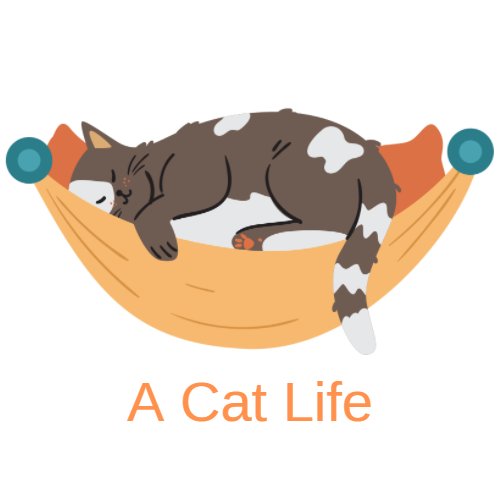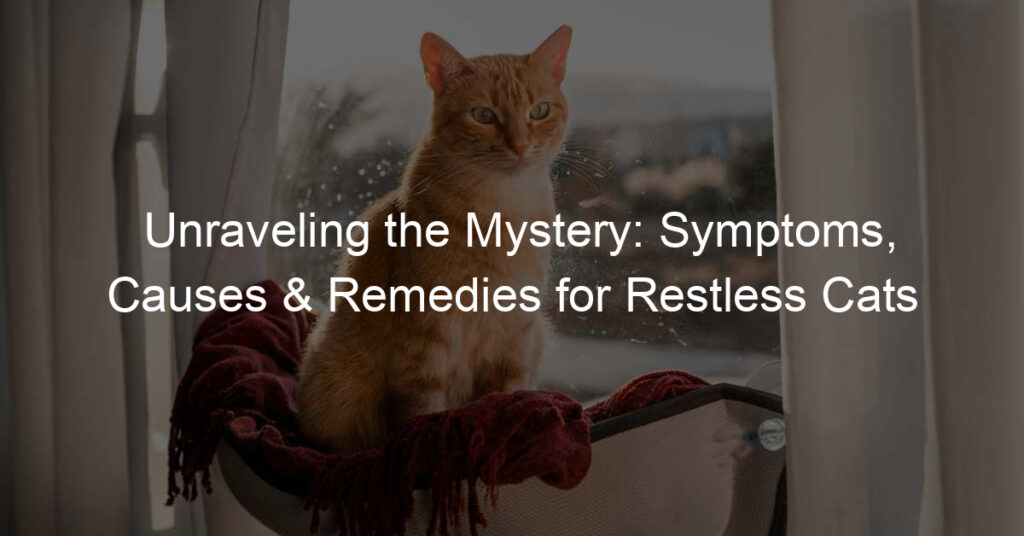
Introduction to Companion Cats
Companion cats, also known as house cats, are more than just pets. They are our friends, our confidants, and our family. In this section, we will explore the concept of companion cats and the importance of their companionship.
- Understanding the Concept of Companion Cats
- Importance of Cat Companionship
A companion cat is a domesticated feline that shares a close and mutual relationship with humans. Unlike stray or feral cats, companion cats live in our homes and are a part of our daily lives. They are not just pets; they are members of our family. They provide us with companionship, love, and emotional support. They are there to greet us when we come home, to comfort us when we are sad, and to make us laugh with their playful antics. They are our companions in the truest sense of the word.
The companionship of a cat can have a profound impact on our well-being. Numerous studies have shown that owning a cat can reduce stress, lower blood pressure, and improve mental health. Cats provide a sense of comfort and security, and their purring has a calming effect that can help us relax. Furthermore, caring for a cat can give us a sense of purpose and responsibility, which can be particularly beneficial for older adults and people living alone. In short, the companionship of a cat can enrich our lives in many ways.
In the following sections, we will delve deeper into the topic of companion cats, including considerations for adopting a second cat, managing a multi-cat household, and case studies of successful second cat adoptions. So, stay tuned to learn more about the wonderful world of companion cats.
Considering a Second Cat
Are you thinking about adding another feline friend to your family? There are several reasons why getting a second cat can be beneficial. Let’s explore them.
Why Get a Second Cat?
Bringing a second cat into your home can have a positive impact on both your life and the lives of your feline companions. Here are a few reasons why you might want to consider it:
- Benefits of Companion Cats
- Enhancing Cat Socialization
- Positive Impact on Cat Behavior
Having two cats means they can keep each other company, especially when you’re not at home. Cats are social animals and enjoy the company of their own kind. A companion cat can help alleviate feelings of loneliness or boredom that a single cat might experience.
Introducing a second cat can help enhance your existing cat’s social skills. They will learn how to share, play, and coexist with another feline, which can be beneficial for their overall social behavior.
Having a second cat can also have a positive impact on your cat’s behavior. Cats often mimic each other’s behavior, so a well-behaved second cat can help improve the behavior of your first cat. Additionally, having a playmate can help burn off excess energy, reducing the chances of destructive behavior.
In conclusion, getting a second cat can have numerous benefits for both you and your existing feline companion. It can provide companionship, enhance socialization, and positively impact behavior. However, it’s important to consider your first cat’s temperament, the financial implications, and the space in your home before making a decision.
Things to Consider Before Getting a Second Cat
Adding a second cat to your home can be a wonderful experience, but it’s important to consider a few key factors before making this decision. Let’s explore these considerations in detail:
- Understanding your first cat’s temperament
- Assessing the financial implications
- Space considerations in your home
Your first cat’s personality plays a significant role in how they will react to a new feline companion. If your cat is generally sociable and enjoys the company of others, they may welcome a new friend. However, if your cat is more of a loner, they might not appreciate the intrusion. Spend some time observing your cat’s behavior and consider consulting with a vet or a pet behaviorist for advice.
Adding another cat to your household will undoubtedly increase your expenses. You’ll need to budget for additional food, litter, and veterinary care, not to mention any unexpected health issues that might arise. It’s important to ensure you’re financially prepared for these additional costs before bringing a second cat into your home.
Every cat needs their own space to feel safe and comfortable. This includes separate areas for eating, sleeping, and using the litter box. If your home is small, you might need to get creative with space utilization. Consider vertical spaces like shelves or cat trees that can give your cats more room to roam.
In conclusion, while the idea of getting a second cat can be exciting, it’s crucial to consider these factors to ensure a harmonious transition. Remember, every cat is unique and what works for one might not work for another. Therefore, understanding your first cat’s temperament, assessing your financial readiness, and considering the space in your home are all essential steps in making this important decision.
Adopting a Second Cat
Bringing a second cat into your home can be a rewarding experience, not just for you but also for your first feline friend. But where should you go to adopt your new furry family member? Let’s explore the benefits of pet adoption and some reliable places to find your second cat.
Where to Adopt a Second Cat
There are many places you can go to adopt a second cat. But before we delve into that, let’s first understand the benefits of pet adoption.
- Benefits of Pet Adoption
- Reliable Places for Cat Adoption
Adopting a pet, especially a cat, comes with numerous benefits. Not only are you giving a home to a cat in need, but you’re also making room for other animals in shelters. Plus, adopted cats are often vaccinated, spayed or neutered, and microchipped before they’re adopted, saving you these initial costs. According to the American Society for the Prevention of Cruelty to Animals (ASPCA), about 3.2 million cats are adopted from shelters each year, showing the popularity and benefits of adoption.
When it comes to adopting a second cat, there are several reliable places you can consider. Animal shelters and rescue groups are often the first choice for many, as they house a wide variety of cats of different breeds, ages, and personalities. Additionally, some pet stores partner with local shelters to host adoption events. Lastly, online platforms like Petfinder can help you find cats available for adoption in your local area. Remember, it’s important to choose a reputable place that prioritizes the health and well-being of their cats.
Adopting a second cat is a big decision, but with the right information and resources, it can be a smooth and rewarding process. Stay tuned for our next section where we will discuss how to prepare for the arrival of your second cat.
Preparing for the Arrival of the Second Cat
Adding a new feline friend to your family can be an exciting time. However, it’s important to prepare your home and your existing cat for the new arrival. Here are some steps to help make the transition smoother:
- Setting up Separate Spaces
- Introducing the New Cat to the Household
Before bringing the new cat home, it’s crucial to set up separate spaces for each cat. This gives both cats their own territory and reduces the chances of territorial disputes.
Each space should have the essentials: food, water, a litter box, and a comfortable place to sleep. It’s also a good idea to include toys and scratching posts to keep the cats entertained.
Remember, these spaces don’t have to be permanent. They’re just a way to help the cats feel secure as they get used to each other.
Introducing a new cat to your household should be done gradually. Start by letting the cats sniff each other’s items, like toys or bedding. This helps them get used to each other’s scent.
Next, let the cats see each other without direct contact. You can use a baby gate or keep the new cat in a carrier. This allows the cats to observe each other from a safe distance.
Once the cats seem comfortable, you can allow supervised face-to-face meetings. Keep these meetings short at first, and gradually increase the time as the cats get more comfortable.
Remember, patience is key. It may take time for your cats to adjust to each other, but with patience and care, they can become great companions.
In conclusion, preparing for the arrival of a second cat involves setting up separate spaces and introducing the new cat gradually. By following these steps, you can help ensure a smooth transition for both your existing cat and your new feline friend.
Managing a Multi-Cat Household
Managing a multi-cat household can be a challenging task. However, with the right understanding and approach, it can be a rewarding experience. This section will focus on cat interaction in multi-cat homes and how to manage potential conflicts.
Cat Interaction in Multi-Cat Homes
Cats are social animals, but their social structure is different from that of humans or dogs. Understanding this structure can help you manage your multi-cat household more effectively.
- Understanding cat hierarchy
- Managing potential conflicts
In a multi-cat household, there is often a hierarchy or pecking order. This is not always based on size or age, but rather on confidence and personality. The cat that is most confident and assertive is usually the one at the top of the hierarchy. It’s important to respect this hierarchy and not try to change it, as it can lead to stress and conflict among your cats.
Conflicts can arise in a multi-cat household for various reasons, such as competition for resources or territory. To manage these conflicts, ensure that each cat has its own resources (like food bowls, litter boxes, and sleeping areas) and plenty of space to move around. If conflicts persist, consider consulting with a professional cat behaviorist.
Remember, every cat is unique and will react differently to living in a multi-cat household. It’s crucial to observe your cats closely and adjust your management strategies as needed to ensure a harmonious home for all.
Ensuring a Happy Cat Household
Managing a multi-cat household can be a rewarding experience if done right. One of the key aspects of ensuring a happy cat household is to provide individual attention and keep up with health checks. Let’s delve into these two important aspects:
- Providing Individual Attention
Every cat is unique and requires individual attention. Spending quality time with each cat in your household is crucial. This not only strengthens your bond with them but also helps you understand their unique personalities and preferences.
Try to engage in activities that your cat enjoys. Some cats might love playing with toys, while others might prefer a quiet cuddle session. Remember, the goal is to make each cat feel loved and valued.
- Keeping Up with Health Checks
Regular health checks are essential for maintaining a happy cat household. Cats are known for their ability to hide discomfort or illness, so regular vet visits can help detect any potential health issues early.
Health checks typically include a physical examination, vaccinations, dental check-ups, and sometimes, blood tests. It’s also a good time to discuss any behavioral changes you’ve noticed in your cats with the vet.
| Individual Attention | Health Checks |
|---|---|
| Engage in activities your cat enjoys | Regular vet visits |
| Understand their unique personalities and preferences | Physical examination, vaccinations, dental check-ups |
| Make each cat feel loved and valued | Discuss any behavioral changes with the vet |
In conclusion, providing individual attention and keeping up with health checks are two essential steps to ensure a happy cat household. Remember, a happy cat is a healthy cat!
Case Studies: Successful Second Cat Adoptions
Let’s delve into some real-life examples of successful second cat adoptions. These case studies will provide valuable insights into the process and highlight the potential challenges and rewards.
-
Case study 1: A smooth transition
Meet Lisa, a proud cat owner who decided to adopt a second cat named Bella. Lisa already had a 3-year-old cat named Max. She was worried about how Max would react to a new member in the house. To ensure a smooth transition, Lisa followed a step-by-step introduction process.
First, she kept Bella in a separate room for a few days, allowing Max to get used to her scent. Then, she gradually introduced them under supervision. She also made sure both cats had their own space and resources like food bowls, litter boxes, and toys.
Within a few weeks, Max and Bella started to get along well. They even started to play and sleep together. Lisa’s story shows that with patience and the right approach, a second cat adoption can be a smooth transition.
-
Case study 2: Overcoming initial hurdles
Next, we have John, who adopted a second cat named Whiskers. His first cat, Fluffy, was initially not very welcoming. There were instances of hissing and swatting, which worried John.
John consulted a cat behaviorist who suggested some changes. He started to feed them in separate rooms and gradually moved their feeding stations closer. He also used a pheromone diffuser to help reduce stress and create a calming environment.
It took a few months, but eventually, Fluffy and Whiskers started to tolerate each other. Today, they coexist peacefully and have even developed a playful relationship. This case study shows that even if there are initial hurdles, they can be overcome with the right strategies and patience.
These case studies highlight that every second cat adoption journey is unique. It may take time, patience, and sometimes professional help to ensure a successful transition. But the reward of seeing your cats bond and the joy they bring to your life makes it all worth it.
Conclusion: Is a Second Cat Right for You?
Deciding to bring a second cat into your home is a decision that should not be taken lightly. It requires careful consideration and planning. Let’s recap some of the key takeaways and final considerations from our discussion.
- Key takeaways
- Adding a second cat to your household can provide companionship for your existing cat and bring additional joy to your home.
- It’s important to consider the temperament, age, and health of both cats to ensure a smooth transition.
- Proper introductions and gradual integration are crucial for a successful multi-cat household.
- Case studies have shown that with patience and understanding, second cat adoptions can be a rewarding experience for all involved.
- Final considerations
- Are you prepared for the additional responsibility, time, and costs associated with owning a second cat?
- Does your current cat have a personality that would be compatible with a new feline friend?
- Are you willing to put in the necessary effort to ensure a successful introduction and integration process?
In conclusion, adopting a second cat can be a wonderful decision, but it’s one that requires careful thought and planning. Consider all the factors we’ve discussed in this post and make the decision that’s right for you, your family, and your feline friends.








